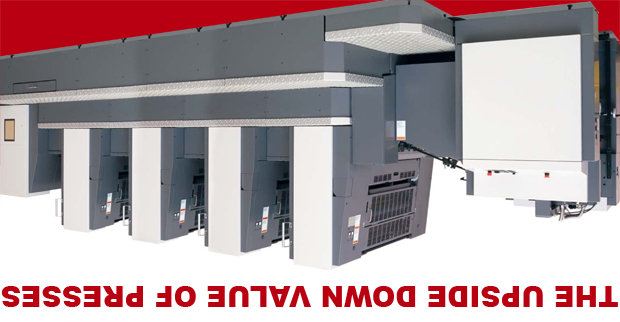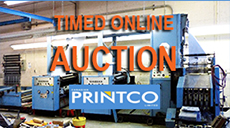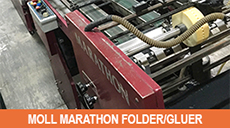
|
|
| Home › Articles › Here |
  |

|
||||||||||||||
| By: Nick Howard | Date: September 2011 | Contact the Author |
|||||||||||||||
| The economic forces of supply and demand
are particularly strong in the
business of selling highly productive
machinery. Within the printing industry,
supply and demand often feels like a curse
to equipment suppliers when they need
to determine a satisfactory allowance for
taking back a client’s machine, while also
making sure that take-back allowance is
the correct figure based on current business
conditions. As a certified equipment appraiser who also happens to sell new and used printing machines, I have over three decades of experience diagnosing this take-back allowance in relation to market supply and demand. While I have seen several peaks and valleys for the value of trade-in equipment, I can point to three memorable periods for machine manufacturers over the past 25 years. The dates are 1990, 2001 and 2008. The year 1990, well before mass public adoption of World Wide Web technologies, was an especially buoyant period for stable used machinery values. The advent of the “off-press” control console was essentially the only major labour saving tool up to this point. The secondary market was still not affected by this feature and resulted in consistently positive machine resale prices. Stories abound – and I’ve heard them in all shapes and forms – for how a company actually sold a used press for the same or more than they originally paid. That period and the earlier 1972 to 1990 era spawned these urban legends. The year 2001, which I suggest as the industry’s final period of strong used-press value, ended abruptly because of the dotcom bubble burst and the tragedy of 9/11. These major events impacting financial markets were then exacerbated by a complete flip of FX currencies. Demand disappeared for both new and used equipment – a giant sucking sound as markets re-trenched and stopped growing. In fact, both the United States and Canadian markets declined for a rare time. Nothing however, even the two previous periods (1990 and 2001), can compare to the year of 2008. This year marked a period – essentially 2 ½ years – of depressed press values, dwarfing both 1990 and 2001 in new ways and with special hardships that also included a new formidable opponent – a matured World Wide Web. Costs were everything. The new era of the Web, often described as Web 2.0, received a huge shot of cheap and cheerful adrenaline – mobile and smart-phone computing. Printers simply could not provide such interactive and immediate delivery of communications, particularly at such low production costs. As a result, the value of graphic-arts machinery dropped like coveralls at quitting time. These prior periods were very good for manufacturers based on the primary factors of limited machine availability and a slow technology curve – sending trade-in values higher. Demand was strong for new, slightly more automated machinery, which created better residual values for secondhand machines. However, each one of these peak-value years, 1990, 2001 and 2008, were quickly followed by severe recessions in which machinery values never fully recovered. New machine prices did not proportionately increase, as in the past, for such machinery. This supply-and-demand environment is very evident today, during the printing industry’s bounce back from two years of horrible economic conditions. Printer pressure and supplier pricing Many printers who entered equipment contracts prior to 2008 now feel the need to revisit or update these contracts because of a very nasty problem. As we say in the machinery business, their contracts today appear to be “upside down,” meaning their machinery is worth less than what they owe. The industry at large began feeling the effects of the cheaper cost of new technology and lower demand for it. Several factors can lead to this upsidedown equipment value. In essence, it seems as if the printer paid too much for the machinery when the cost is translated into 2011 dollars. Of course, the price of the machinery was not too intrusive back when the contract was signed. A second major factor leading to the upside-down value often stems from the contract terms of a lease or conditional sale that required very little money up front – as clearly reflected in payment schedules. Eighty-four month contracts are designed to reduce monthly payments on major equipment purchases, but I have seen such contracts come back to haunt many printers. This was very evident as several printers struggled through the most recent, mortgage-bubble inspired downturn. In fact, some struggling printers would have been forced to restructure such contracts by adding even more term, lengthening the contract in a way that made the asset even more lopsided. The longer the term, the higher the likelihood of a negative value. This upside-down trade-in value also creates major challenges for equipment suppliers as they approach rebounding investment in printing technology. I doubt any equipment salesperson enjoys breaking the news of such low trade-in allowances to customers, who, more often than not, are unaware of these supplyand- demand conditions. In fact, most suppliers absolutely fear discussing a low trade-in allowance. In the past, when they could work with partnering finance companies, equipment suppliers had the option to build in some or all of the paper loss into the new machine. This strategy is now almost impossible to implement. Moreover, a great many printers, who believed they were somewhat protected by the manufacturer, instead find that most finance companies are unsympathetic to a reduction in asset value. They expect and demand payments for the full payout to be honoured, which in turn creates a lot of angry printers with little good to say about the supplier or financier. Equipment suppliers are generally not financing your machine. This is difficult to understand for some, as maybe the contract and finance were combined, so that when crisis of cash flow hits, a printer somehow expects a sympathetic ear from the supplier. Not so, and the guy or gal you find yourself talking to knows very little about print, but a whole lot about your signed financial commitment. It is not as if printers are being misled by their suppliers, however. There simply may not be a financial method to prevent such scenarios when rapid declines in market value hit without warning. Assuming a higher payment structure is not answer, because it is not always possible for a printer to increase their monthly payments in order to pay down a debt, when an asset value is falling at a pace faster than at which the investment can be paid off. Under the new challenges of running a printing business, do you really want to own and have a machine beyond the loan anyway. |
|||||||||||||||
|
|||||||||||||||





